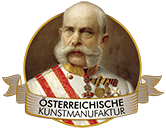The term 'Netherlandish 16th Century' refers to a broad spectrum of artists, workshops, and studios active in the Netherlands during the 16th century, whose works can no longer be attributed to a single individual with certainty. This period was marked by a dynamic interplay of cultural, religious, and economic forces, making the region a vibrant center of artistic innovation. The 16th-century Netherlands experienced significant political upheaval, the Reformation, and the rise of Humanism, all of which left a profound imprint on the arts. Artists of this era experimented with perspective, light, and color, drawing inspiration from classical antiquity while blending these influences with local traditions. Religious themes dominated painting, but there was also a growing interest in scenes of daily life, landscapes, and portraiture.
Works grouped under 'Netherlandish 16th Century' are characterized by technical mastery and meticulous attention to detail. Artists often worked in large workshops, with multiple hands contributing to a single painting. The art of this period was closely tied to international trade, reflected in the dissemination of motifs and techniques across borders. Rich in symbolism and allegory, the visual language frequently alluded to the political and religious tensions of the time. The Netherlandish masters of the 16th century not only shaped the art of their own region but also had a lasting impact on the development of European painting as a whole. Their works are now housed in major museums worldwide and are considered milestones in the history of art.
×




.jpg)
.jpg)
_-_(MeisterDrucke-1217651).jpg)
_-_(MeisterDrucke-1217651).jpg)
.jpg)
.jpg)
.jpg)
.jpg)
.jpg)
.jpg)
.jpg)
.jpg)
_-_(MeisterDrucke-1223572).jpg)
_-_(MeisterDrucke-1223572).jpg)
.jpg)
.jpg)
.jpg)
.jpg)
_-_(MeisterDrucke-1237041).jpg)
_-_(MeisterDrucke-1237041).jpg)
.jpg)
.jpg)
.jpg)
.jpg)
.jpg)
.jpg)
.jpg)
.jpg)
.jpg)
.jpg)
.jpg)
.jpg)
.jpg)
.jpg)
.jpg)
.jpg)
.jpg)
.jpg)






